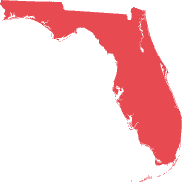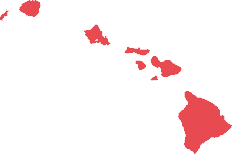Updated on 06.08.21
Alabama

- Effective April 9, 2021, the Governor removed its statewide mask mandate.
- On March 4, the Governor issued a “final” extension of the state’s mask order until April 9. The state did, however, lift dining restrictions, allowing restaurants to now seat up to eight people at a table. Partitions and social distancing must continue to be enforced.
- The state has extended a safer-at-home order until 5 p.m. on March 5. People over age 6 must wear masks in indoor public spaces. Restaurants, bars, and breweries can offer dine-in service, but party size is capped at eight people. Tables or booths must be placed 6 feet apart or, if within 6 feet, must be separated by partitions. As of February 18, all of Alabama’s 67 counties are either the low or moderate risk categories.
- As of November 2, the Governor extended the Safer at Home Order and the Public Health Emergency Order until January 22, 2020. A mask mandate remains in effect, and this was also extended until January 22.
Alaska
- Effective May 3, 2021, restrictions on gatherings and businesses in Anchorage became recommendations instead.
- Although the state fully reopened on May 22, Anchorage took a slower approach to ease restrictions. Anchorage reduced COVID-19 restrictions on January 1, allowing indoor service in bars and restaurants at 25% capacity. Alcohol service must stop at 11 p.m.
- As of May 22, the state opened up all businesses at 100 percent occupancy. Restaurants and bars currently have no imposed capacity limits and are not required to enforce social distancing. These establishments are not required to adhere to sanitation requirements. Reservations are recommended but not required.
- Local communities will continue to have the option of keeping stricter rules.
- The Governor said they will monitor their COVID-19 numbers after the business reopening and will be prepared to tighten restrictions again, but he “doesn’t believe that will be necessary.”

Arizona

- Effective March 25, Arizona lifted COVID-19 restrictions on businesses and events and prohibited, in most cases, the enforcement of local mask mandates; bars and restaurants can now operate at full capacity.
- The Governor relaxed emergency restrictions previously placed on businesses on March 5. Mask and physical distancing requirements remain in effect, however, bars and restaurants may now operate at full capacity.
- On February 13, the Governor signed an order allowing restaurants to extend their premises for outdoor dining services. Restaurants can offer indoor dining service but must limit occupancy to 50% and must separate parties by at least 6 feet. The Governor stated he had no plans to further restrict Arizona businesses.
- The state announced on December 11 that it made no further plans to amend state restrictions while vaccinations are administered. No statewide mask mandate has been administered, however, several counties have ordered one.
- As of December 2, the Governor relaxed regulations on restaurants and bars in hopes to encourage a shift to indoor from outdoor dining; indoor dining will continue to be restricted, while outdoor dining capacity is expanded. Establishments that do not closely adhere to safety guidelines could face closure.
- Restaurants are encouraged to offer and promote outdoor dining opportunities.
Arkansas
- The Governor lifted the statewide mask mandate on March 31, 2021.
- On February 26, the state mandated many new directives. First, restaurants and bars may operate at 100% occupancy and are encouraged to continue to offer a safe environment for patrons and employees. Second, the state changed its public health directives to guidelines, making them no longer mandatory. Restaurants may operate at 100% occupancy, The mask mandate, however, will continue through March 31 but will end if certain conditions are met.
- The Governor on December 29 extended the coronavirus emergency declaration by another two months as the state reported a new high in hospitalizations from COVID-19. Arkansas has a mask mandate, and is requiring bars, restaurants, and clubs that serve alcohol to close by 11 p.m. in an effort to curb a surge in coronavirus cases and hospitalizations. Indoor dining is limited to 66% capacity. This order remains in effect as of March 2.
- On December 03, 2020, Arkansas is requiring bars, restaurants, and clubs that serve alcohol to close by 11 p.m.
- On July 16, 2020 the Governor mandated that masks be worn in all public places when physical distancing is not possible. This mandate remains in effect.

California

- The state announced its plan to fully open the state by July 15, 2021, ending the tiered, color-coded system to determine logistics and restrictions.
- Starting March 11, the state eased restrictions allowing breweries and wineries that do not serve meals to open outdoor services, and also set a plan to reopen bars. Customers must have reservations in advance and will be limited to 90 minutes of service, while all on-site alcoholic beverage consumption must end by 8 p.m.
- As of March 2, seven more counties became eligible to open indoor operations in restaurants. Now, 12 counties in total rest in the yellow tier.
- The Governor announced the lifting of the stay-at-home order for all of the state’s regions on February 6; all are now under the state’s “Blueprint for a Safer Economy” with each county falling into one of four color-coded tiers:
- Each county or region individually decides how to proceed depending on the number of cases and hospitalizations in that area. Purple (the most severe risk of COVID-19), Red, Orange, and Yellow (where the virus is minimally widespread). Counties may resume indoor dining at 25% in the Red tier or 100 patrons, whichever is fewer. In the Orange tier, bars and breweries may resume outdoor services. In the yellow tier, most businesses may reopen but must follow safety precautions.
Colorado
- Fully vaccinated Coloradans are free to go without masks unless the setting or business they are in requires otherwise, the Governor announced May 14, 2021.
- The state’s color-coded dial which guided counties to reopening ended on April 16, 2021. Now, individual counties determine reopening policies and restrictions.
- On February 23, the Governor and the state health department revised the current metrics to allow more counties to move into less-restrictive levels and made it easier for countries to move between restriction levels.
- On February 6, the state updated its “dial” approach to safely reopen. All counties fall into one of six color-coded levels of risk, depending on the incidents of COVID-19. Level green is the least restrictive, under which businesses can operate at 50 percent capacity or 500 people, whichever is smaller. In level-blue counties, public and private gatherings cannot exceed 10 participants or people from more than two households. Restaurants can operate at 50 percent capacity or 175 people, whichever is smaller. In yellow counties, restaurants and indoor event venues can operate at 50 percent capacity, with a maximum of 50 people per room (the maximum might be higher for larger establishments). In orange counties, restaurants can operate at 25 percent capacity, with a maximum of 50 patrons per room. In red counties, restaurants must halt indoor dining, but outdoor table service, delivery, and takeout are permitted.
- After nearly six weeks under COVID-19 restrictions, many counties eased restrictions on January 4, reopening restaurants to limited indoor dining and allowing small, personal gatherings.
- As of October 30, Colorado created a new method to gauge reopening plans through “the dial”. Each county or region is responsible for the corresponding directives based on its level on the dial.
- The Governor issued a statewide mask mandate on July 16, 2020. This requires people to wear a face-covering in public indoor spaces and on public and non-personal transportation services. This mandate remains in effect.

Connecticut

- The state lifted all COVID-19 restrictions, including Connecticut’s mask mandate for vaccinated individuals, on May 19, 2021.
- The Governor relaxed outdoor dining restrictions on April 14. Restaurants may now offer outdoor dining at 100% capacity.
- Starting March 4, the state lifted capacity restrictions for many businesses, while capacity guidelines for bars and restaurants and the mask mandate will remain in effect. Restaurants still have an 11 p.m. curfew.
- On February 13, restaurants in Connecticut have been allowed to stay open until 11 p.m., giving them an extra hour for business. They must still limit capacity to 50%. The state has authorized local health directors to impose a $10,000 fine per violation on businesses that hold events over capacity limits. This order remains in effect.
- As of November 16, 2020, the Governor tightened restrictions on the state and brought Connecticut from its Phase 3 of reopening back to a modified Phase 2. Restaurants would be required to reduce capacity back down to 50%, and all indoor dining must close at 9:30 p.m. Social gatherings were also further limited.
D. C.
- The mayor announced that capacity restrictions on most indoor activities would lift May 21, including restaurants, schools and offices. Bars, nightclubs and entertainment venue restrictions will be removed by June 11, 2021.
- D.C. eased some restrictions on March 22, 2021, allowing indoor dining at 25% or 250 people, whichever is fewer.
- Indoor dining could resume in D.C. starting January 22. Carryout and delivery services may continue, and restaurants may serve customers up to 25% of their regular capacity. This order remains in effect as of February 13.
- Beginning at 10 p.m. on December 23, restaurants in D.C. could no longer offer indoor dining. Restaurants will continue to be allowed to stay open until midnight, but alcohol sales must stop at 10 p.m.
- On December 03, the Governor amended its phase 2 reopening guidelines, mandating that restaurants will continue to be allowed to stay open until midnight, but alcohol sales must stop at 10 p.m.

Delaware

- Effective May 21, capacity restrictions at Delaware restaurants and other businesses will be lifted, enabling them to host as many people as they can fit under the state’s social distancing requirement.
- The Governor on April 27, 2021, eased outdoor party size restrictions to parties of 10 people and changed the mask requirements for student-athletes.
- Starting at 8 a.m. February 12, capacity limits at restaurants and other indoor venues loosened as Delaware continues to see a decrease in COVID-19 cases and hospitalizations. The new rules allow for 25 people or 50% of the stated fire occupancy, whichever is less, though organizers may request to host up to 150 people. Outdoor gatherings are limited to 50 people or up to 250 with an approved plan from DPH. Delaware bars and restaurants no longer had a curfew as of January 8.
- As of November 23, 2020, the state limited indoor dining at restaurants to no more than 30% capacity. Restaurants and bars in Delaware will also have a 10 p.m. curfew, and businesses in the state will have capacity limits cut back under new restrictions.
- Starting December 14, Delaware will also require people who are indoors with anyone outside their immediate household to wear a mask. This is in addition to the state’s current mask order, which requires everyone out in public to wear a mask.
Florida
- The Governor suspended all local COVID-19 restrictions on May 3, 2021 and ended all local government abilities to impose mask requirements and other social distancing measures used this past year.
- On November 25, the September order was extended. This order prevents local authorities from inhibiting an individual from “working or operating a business”. It also continued to prevent restaurants from operating at less than 50% capacity, and forces local authorities to justify any limits below 100% occupancy. This order remains in effect.
- A mask mandate has still not been ordered. Facial coverings in public spaces are left up to local authorities to determine, but they are not permitted to enforce.
- As of September 25, the Governor declared that the state would be moving into its third phase, opening all bars and restaurants to 100% capacity. Although this mandates the minimum capacity for all restaurants must be 50%, local authorities must justify any capacity between this and full capacity.

Georgia

- The Governor lifted all COVID-19 social distancing requirements for restaurants on April 30, and ended the other remaining coronavirus restrictions as of April 8, 2021.
- As of March 16, the state’s bars and restaurants no longer must adhere to capacity limits and separate standards. The Governor combined the restrictions for both establishments and extended Georgia’s state of emergency to April 6, 2021.
- On November 30, Governor extended the current coronavirus restrictions until January 31. Restaurants must continue to adhere to strict sanitation and social distancing guidelines but are permitted to operate at 100% capacity. The Governor extended this again; it will now expire March 7. Businesses must continue operating with social distancing and sanitation requirements.
- The Governor on November 13 extended existing social distancing and sanitization restrictions for businesses and gatherings in mid-November.
- As of September 25, the governor renewed the State of Emergency to be in effect until October 10. A mask mandate has not been ordered, however, strongly encouraged in all public settings outside of the home.
- As of June 16, 2020 restaurants no longer have to restrict the number of people who can sit together, and limits of the number of patrons per square feet were lifted. Bars were allowed to welcome 50 people or 35 percent of the total listed capacity, whichever is greater.
Hawaii
- On May 25, 2021, the state announced that masks are no longer required outdoors, ocean sports would again be allowed, and several counties are poised to ease restrictions on businesses and gatherings.
- Hawaii restaurants are allowed to open for indoor dining at 50% capacity, 100% on Oahu specifically starting May 11, 2021. A statewide mask mandate remains in effect.
- Starting January 2, 2021, Maui tightened restrictions on gatherings and restaurants. Each island is permitted to decide its own restrictions and plan to reopen; statewide, bars and restaurants must close by 10 p.m. and are limited to 30% capacity, while gatherings are limited to five people. This order remains in effect.
- Most of the state is under an “Act with Care” plan for reopening which allows for most businesses to resume operations with some restrictions. Oahu, for example, is under a four-tier reopening approach; it is currently under the second tier, which allows for most businesses to operate at 50% occupancy. Most of Hawaii is permitting indoor dining at 50% occupancy.
- On November 16, the Governor clarified the statewide mask mandate, which was previously assigned to local authorities on each island.

Idaho

- Effective May 11, 2021, Idaho returned to Stage 4, which effectively lifts restrictions on gathering sizes.
- The Governor announced a return to Stage 3 on February 2. Restaurants and bars may operate at full capacity so long as tables are spaced six-feet apart and customers remain seated unless arriving, leaving, or using the restroom. The state has not issued a mask mandate.
- On November 13, the Governor moved the state back to Phase 2 of its reopening plan. Although the state tightened restrictions, restaurant and bar capacity has not been affected and these establishments may continue to operate at full capacity. Customers must continue to be seated six feet apart and wear a face mask at all times except when eating or drinking. Bars and nightclubs may continue to operate as long as patrons receive service while seated.
- A statewide mask mandate has yet to be ordered, however, many businesses are encouraged to enforce them.
- On July 9, the governor announced the state would remain in the fourth stage of reopening for at least an additional two weeks.
Illinois
- Effective May 14, 2021, Illinois will enter the bridge phase of reopening; seated areas will be unchanged throughout the bridge phase, with the 6-feet limit remaining in effect and masks being required. On the other hand, standing areas, such as bars, will see increases in capacity. Outdoor areas will be allowed to have half capacity, while indoor areas will see an increase to 30% capacity. The limit had been set at 25% during Phase 4.
- All of Illinois moved into Phase 4 on February 4, the least-strict level before the economy is allowed to reopen completely. In Phase 4, indoor service at bars can resume, with an occupancy limit of 25% or 25 people, and only six people can be at a table at a time. Bars and restaurants must stop serving alcohol at 11 p.m. and must be closed by midnight.
- After placing all of the state in Tier 3 in November 2020, the Governor announced that regions meeting certain benchmarks may transition to looser Tier 2 or Tier 1 restrictions. For regions still in Tier 3, restaurants and bars must close between 11 p.m. and 6 a.m. and cannot offer indoor service. Outdoor dining is permitted, but reservations are required, tables must be spaced six feet apart, and there is a six-person party limit.
- On November 20 the state expanded restrictions; restaurants and bars must close between the hours of 11 p.m. and 6 a.m. and cannot offer indoor service. Outdoor dining is permitted, but reservations are required, tables must be spaced 6 feet apart, and party size is limited to six people. Individual establishments determine a suitable capacity limit that adheres to safety requirements. These restrictions were extended until February 6.
- As of November 8, the Governor mandated that region 3 must again halt indoor dining services and that crowds of more than 25 people are no longer allowed. This region includes much of western-central Illinois.
- When taking reservations and seating walk-in customers, restaurants are encouraged to obtain an email or phone number for contact tracing if needed.
- Patrons are required to wear a face-covering when not actively eating or drinking.
- Standing areas have a maximum occupancy of 25%, and high-contact areas such as buffets and self-service drink stations are permissible with additional precautions.
- Illinois divides the state into four regions, with reopening phases for each keyed to COVID-19 test positivity rate, ICU bed availability, and other metrics.

Indiana

- Indiana’s statewide mask mandate ended April 6, 2021, while state health officials continue to encourage mask-wearing. Indiana lawmakers voted to shift power away from local health officers to elected officials during emergencies.
- As of March 10, 42 of the state’s 92 counties were placed in the blue level of the advisory-level. Those counties will no longer have social-gathering capacity restrictions, but they must obey distancing and mask-wearing protocols.
- The Governor announced that the executive order placing county-by-county COVID-19 restrictions will be extended through the month of February, though with some changes. Effective February 1, counties designated as red or orange (regions with the greatest risk of coronavirus spread) must limit capacity to 25% in all establishments. Counties designated as yellow must limit capacity to 50% in all establishments. Counties designated as blue may operate at full capacity, so long as social distancing, mask-wearing, and other precautions are enforced. A statewide mask mandate remains in effect.
- The Governor extended the current public health emergency for an additional 30 days on January 4.
- The Governor announced the state will move away from its stage 5 restrictions and toward a county-by-county approach. The Indianapolis Mayor announced that effective November 15, the County’s indoor bars and other entertainment venues must limit capacity to 25%. Restaurants must limit indoor dining services to 50% capacity and may not seat parties larger than six.
- As of July 27, 2020 face coverings were required in public.
Iowa
- As of February 7, the state lifted its statewide mask mandate and all requirements about social distancing for businesses and social gatherings.
- Effective through January 8, restaurants, bars, and other food and drink establishments may operate at 100% capacity but must seat parties six feet apart and cannot seat groups with more than eight people. On January 7 the state extended these restrictions until February 6, and also permitted these establishments to resume normal hours. A mask mandate remains in effect.
- As of November 16, the Governor mandated that any person aged 2 and older is required to wear face coverings in public settings while within 6 feet of another person. Additionally, Reynolds also tightened bar and restaurant hours to 6 am – 10 pm, although carry-out and drive-through are still permitted before and after those hours.
- As of June 10, restaurants and bars have no strict capacity limits, but social distancing and strong hygienic measures must be in place. Tables must be six feet apart and patrons should be properly distanced.

Kansas

- The Governor extended the expiration date of Kansas’ COVID-19 emergency declaration to March 31. On January 13, the state eased some restrictions, allowing restaurants and bars to serve customers until midnight and remain open until 12:30 a.m. Bars and restaurants will still be limited to 50% of their normal operating capacity, and patrons will still be required to wear masks unless actively eating or drinking.
- As of November 18, all citizens are required to wear a facial covering in all public spaces where social distancing is not possible. A statewide plan to restart the economy in phases offers guidance about capacity limits, but counties aren’t required to follow. A mask mandate remains in effect.
- As of October 5, 2020, Kansas solidified a phased plan to reopen the state giving individual counties the power to determine reopening speed. Restaurants are permitted to open beginning in phase 1 while adhering to social distancing guidelines, and bars are permitted to open starting in phase 3.
- All counties’ businesses are encouraged to follow the state’s industry-specific guidelines regarding sanitation, and customers must be at least six feet apart at all times.
Kentucky
- The state mandated that restaurants that cater to fewer than 1,000 people may also operate at 75% capacity beginning May 28, 2021.
- Kentucky plans to reopen the economy and return to full capacity everywhere on June 11, 2021.
- Masks were no longer be required at outdoor events that host fewer than 1,000 people on April 26, 2021. The Governor did proclaim, however, that once 2.5 million citizens are administered the first dose of vaccines, he will lift most restrictions, including capacity limits on bars and restaurants.
- On March 5, 2021, the indoor operating capacity for Kentucky bars and restaurants increased to 60%, up from 50%.
- Kentucky restaurants and bars were able to reopen their indoor services at 50% capacity starting December 14 2020. Restaurants and bars must stop food and drink service by 11 p.m. and close by midnight. Delivery and pickup may continue after those hours. This order remains in effect as of February 18.
- On July 9, 2020, the governor mandated wearing a mask in all public indoor areas and in outdoor areas where social distancing is impossible.

Louisiana

- The state ended its mask mandate in most public places on April 28, 2021, however, businesses may continue to enforce their own mandates.
- The Governor eased most Louisiana restrictions in a new order on April 7 in which limitations on bar and restaurant service are completely lifted and go to local ordinances to enforce.
- Starting March 4, the state’s bars can open and indoor music can return for the first time since locking down the state. However, the mask mandate remains in effect.
- The Governor extended the modified version of phase 2 restrictions of the state’s reopening plan until the end of March 2021. Restaurants are required to reduce indoor dining capacity to 50% and must stop alcohol service by 11 p.m. Bars must suspend indoor food and drink consumption in regions with a high rate of COVID-19. Outdoor service is permitted, but seating is capped at 50 patrons.
- On November 25 the Governor announced more restrictions, reducing capacity at most businesses and restaurants to 50% and must stop serving alcohol at 11 pm. Bars must suspend indoor food and drink consumption in parishes with a higher rate of COVID-19. This order remains in effect.
- Outdoor service is permitted, however, each establishment must not seat more than 50 patrons.
- As of July 11, the governor required that all citizens above the age of 8 wear a mask in all public areas, unless social distancing can be maintained. On August 26th, the governor extended this mandate, continuing to operate in Phase 2.
Maine
- Effective May 24, 2021, Maine lifted all capacity limits and requirements to physically distance in outdoor settings and all capacity limits in public indoor venues. Maine also eliminated physical distancing requirements indoors, other than in settings in which people are eating or drinking, such as restaurants and bars.
- The Governor ended the outdoor statewide mask mandate on April 27, 2021, however, masks are still to be worn indoors.
- As of March 26, 2021, the limit for indoor dining increased to 50%, and outdoor dining to 75%. Indoor dining will increase to 75% on May 24, 2021, and outdoor to 100%.
- The Governor announced she would end the 9 p.m. early closing time for businesses, effective February 1. Indoor gatherings are limited to 50 people at restaurants and other businesses with inside seating. A six-foot distance between seating areas is required, among other precautions. Bars and tasting rooms can offer outdoor dining only.
- On January 4, the state extended the curfew on Maine businesses. Restaurants and bars must close by 9 pm, and may continue to operate at 100% capacity while adhering to social distancing and sanitation guidelines. Businesses were given authority to refuse customers that refuse to wear facial coverings.
- The Governor issued a mask mandate in all public spaces, regardless if social distancing is possible, on November 5, 2020.

Maryland

- The Governor announced on May 12, 2021, that all businesses in the state, including restaurants and entertainment and sporting venues, can resume normal operations on May 15.
- The state lifted its outdoor mask mandate on April 28, 2021.
- Starting March 12, the state lifted all capacity limits for all bars and restaurants as COVID-19 metrics continue to improve.
- Restaurants and bars in Maryland may stay open past 10 p.m. starting February 1. Indoor dining is still limited to 50% of the established capacity.
- As of November 17, the Governor announced that all restaurants and bars must close by 10 pm, and must reduce their maximum capacity down to 50% from the previous 75%. Restaurants must also close from on-premise dining between 10 p.m. and 6 a.m. These restrictions go into effect on November 20, 2020.
- Previously, the state mandated that anyone over the age of 5 must wear a facial covering in any public setting where social distancing cannot be maintained.
Massachusetts
- The Governor on May 25, 2021 filed legislation to extend certain emergency measures currently in place via executive orders, which are set to expire on June 15.
- The state plans to fully reopen businesses and the economy on August 1, 2021.
- On March 1, the state will return to Phase 3, Step 2 of reopening, allowing restaurants, bars and other businesses to increase operating capacity to 40%. For businesses without a recorded capacity allowance, the limit will rise to eight people per 1000 feet.
- The Governor said capacity limits to restaurants, and other retail spaces will increase to 40% at 5 a.m. February 8. For businesses without a specified capacity allowance, the limit will rise to eight people per 1,000 feet.
- A 9:30 p.m. curfew on businesses and the state’s stay-at-home advisory expired on February 1. Businesses can now stay open later, though 25% capacity restrictions remain in place.
- Effective December 26, the state placed new restrictions on bars and restaurants, limiting capacity to 25%. The order was originally set to last until January 10. These restrictions were extended through January 24.

Michigan

- The Governor revealed a plan that ties specific vaccination levels to removing COVID-19 restrictions.
- Two weeks after 4.9 million Michiganders have received their first vaccine dose (60% of the eligible population), the state will increase capacity limits at gyms to 50%, and lift curfews on restaurants and bars.
- Two weeks after 5.3 million Michiganders have received their first vaccine dose (65% of the eligible population), the state will lift all indoor capacity restrictions.
- Two weeks after 5.7 million Michiganders have received their first vaccine dose (70% of the eligible population), the state will rescind the health department’s face mask and gathering order.
- Michigan extended its current COVID-19 restrictions on March 19, 2021; mask-wearing and capacity limits remain, however, and indoor dining capacity will be increased to 50% operating occupancy.
- Starting March 5, restaurants may serve twice as many indoor diners under the new set of restrictions, while outdoor dining may continue to operate at full capacity under the new restrictions.
- Michigan will allow indoor dining on a limited basis starting February 1. The state will also implement restrictions on indoor dining: businesses can’t be above 25% capacity, and they have to close by 10 p.m. There must be no more than six people to a table, with tables set at least six feet apart.
Minnesota
- Effective May 7, 2021, limits were lifted for most outdoor dining, and on early closing times for bars and restaurants. Capacity and distancing limits for indoor events and gatherings will be removed on May 28, 2021.
- The state lifted several restrictions on March 12, 2021, increasing the indoor capacity of bars and restaurants up to 75% of their full capacity and seat people in groups of four.
- On February 13, 2021, restaurants were permitted to host up to 250 people but must operate at no more than 50% of the established fire capacity. Restaurants can also remain open until 11 p.m. instead of 10 p.m.
- Bars, restaurants, and other venues will reopen with restrictions on January 11, 2021. Restaurants can reopen indoor dining at 50 percent capacity, with a maximum of 150 people. Parties are limited to six people and in-dining services must close by 10 p.m. Takeout and delivery are permitted.
- The Governor mandated on November 18 that bars and restaurants will pause indoor dining, and will only be allowed to do take-out and delivery service. Bars and restaurants were ordered to stop serving at 10 p.m. The new restrictions will last until Dec. 18.
- As of July 25, the Governor mandated that all citizens wear facial coverings in many public settings.

Mississippi

- The Governor signed a new executive order removing all mask mandates in Mississippi, deciding to instead encourage mask-wearing and other capacity and distancing restrictions rather than mandating them. This order went into effect at 5 p.m. on March 3, 2021.
- The Governor announced on January 15 that changes to an existing mandate will now require residents in 75 counties, down from 78, to wear facial-coverings and follow safety precautions until the end of February. Restaurants and bars may continue to operate at 75% occupancy, and may only serve alcohol to seated patrons and not after 11 p.m. Customers are required to be screened for illness prior to entry, and party size cannot exceed 10.
- The Governor signed an order updating coronavirus-related restrictions effective December 11. The order also extends a restriction on bars and restaurants; these establishments may continue to operate at 75% capacity, and may serve alcohol only to seated patrons and not after 11 p.m. Customers must be screened for illness prior to entry, and party size cannot exceed 10 people. This order will end on February 3.
- As of December 9, businesses can remain open provided they operate at 75% capacity and adhere to guidelines issued by the Mississippi Department of Health and the Centers for Disease Control and Prevention. The order also extends a restriction on bars and restaurants, which may serve alcohol only to seated patrons and not after 11 p.m.
- Businesses are still required to adhere to sanitation and social distancing guidelines and should continue to take every measure to ensure proper precautions for customers.
Missouri
- On February 8, 2021, Missouri senators began a conversation of increasing state power to determine local authority restrictions and to limit the power of local officials to impose health orders. On May 12, this was put into effect. The state has still fully reopened, and in areas without their own orders, social distancing requirements for restaurants and retailers are non-existent, and patrons will no longer be legally required to stay six feet apart from others in public.
- As of June 16, 2020, the state fully reopened. All bars and restaurants may operate at 100% occupancy with a maximum of 10 people per party. The Governor has left the power up to each county to impose limits on public life in regard to capacity limits, sanitation, and other guidelines. There is no mask mandate. These orders remain in effect.
- Restaurants currently have no strict capacity limits, however, tables must be spaced out in accordance with social distancing guidelines.

Montana

- Effective May 16, 2021, the Governor signed legislation invalidating local mask mandates and other virus-related public health measures that counties and cities have adopted during the COVID-19 pandemic.
- The new Governor lifted the statewide mask mandate on February 12, 2021 put in place by his predecessor.
- Starting January 15, Montana removed health mandates on restaurants, bars, breweries, distilleries, and casinos all of which are no longer subject to a 10 p.m. curfew. These establishments may now operate at full capacity, up from 50% capacity, but should implement appropriate social distancing, safety, and sanitation practices.
- On November 17, the Governor ordered bars and restaurants to close at 10 p.m. They require restaurants, bars, breweries, distilleries, and casinos to operate at 50% of capacity, with tables limited to six people and with 6 feet of physical distance between groups. These measures went into effect on November 20.
- On July 15, the governor issued a directive requiring face coverings to be worn in many indoor public spaces and outdoor gatherings.
Nebraska
- The Governor announced during his latest, and last, COVID-19 press conference that he signed an executive order suspending previous executive orders made during the pandemic on May 26, 2021.
- On January 30, the state moved from the “blue” to the “green” phase of its reopening plan. Restaurants and bars are among businesses that can operate at 100 percent capacity and without restrictions. Parties are encouraged, but not required, to maintain a six-foot distance from one another. All businesses are encouraged to follow recommended guidance.
- Starting December 24, the state moved into the “blue” phase of reopening which allows bars and restaurants to operate at 100 percent occupancy with some social distancing and sanitation restrictions. This order remains in effect. The state does recommend that these establishments limit parties to eight people and keep patrons seated except when placing an order or using the restroom.
- As of December 12, the Governor announced that the state has moved from the “orange” to “yellow” phase of its coronavirus pandemic response plan and initiated new directives.
- Under these directives, masks are no longer required but are encouraged in many personal care businesses. Bars and restaurants may continue at recommended occupancy, but parties are limited to eight people and patrons must remain seated except in limited circumstances. Parties are encouraged to maintain six-feet apart but are no longer required to, and businesses are encouraged to follow sanitation and distancing guidelines.

Nevada

- Nevada is adopting the new mask-wearing guidance announced May 13, 2021 for fully vaccinated people, allowing them to stop wearing masks outdoors in crowds and in most indoor settings.
- Starting March 15, 2021, the Governor implemented new restrictions, increasing indoor dining capacity at bars and restaurants from 35% to 50%.
- On February 12, 2021, the Governor issued an order removing restrictions, allowing indoor dining at restaurants and bars to operate at 35% capacity, while outdoor dining will have no capacity limit. Reservations will no longer be required, and the number of patrons allowed at a table with a jump from four to six.
- COVID-19 mitigation efforts will be extended for another 30 days on January 11. These establishments may continue to operate at 25% capacity with a maximum of six guests per table.
- On November 22, restaurants, bars, gyms, fitness and dance studios, casinos, public gatherings, museums, zoos, churches, libraries, and other businesses were limited to a 25% capacity.
New Hampshire
- Beginning May 8, 2021, all of the COVID restrictions limiting New Hampshire businesses became recommendations instead.
- The Governor announced on April 16, 2021 that the state’s mask order would expire, and citizens no longer were required to wear masks in businesses.
- On November 19, the governor announced a statewide face mask order, requiring people over five years old to wear a mask in public spaces. This order was extended until March 2021.
- Reopenings are decided on a county-by-county basis, following social distancing measures. An order effective November 20 and lasts until January 15 allows restaurants to resume indoor and outdoor dining at full capacity, so long as they continue to adhere to social distancing and sanitation guidelines.

New Jersey

- The Governor said vaccinated people in the state don’t need to wear a mask in the office or social distance beginning June 4, 2021.
- Most capacity limits at restaurants, stores, offices, and a host of other sites will be lifted on May 19, 2021 in New Jersey.
- The Governor slightly relaxed indoor restrictions in New Jersey on February 5 by increasing capacity limits from the current 25% up to 35% for restaurants and bars, and allowing these establishments to stay open past 10 p.m.
- On December 14, the Governor announced he had no plans of eliminating indoor dining in New Jersey. Previously, restaurants, bars, and other food establishments were required to stop offering indoor service between the hours of 10 p.m. and 5 a.m. (outdoor dining, takeout, and delivery are permitted) and must limit capacity to 25 percent. Seating at bar areas is prohibited, and restaurants may place tables closer than 6 feet apart if a physical barrier is in place.
- On July 8, the governor said he would sign an executive order that requires face coverings in outdoor public spaces when physical distancing is not possible.
New Mexico
- On April 30, 2021, New Mexico officially updated the state’s color-coded COVID-19 risk map after approving new criteria for measuring county-level risk and local restrictions. The change loosens restrictions in most counties, with 24 of New Mexico’s 33 counties moving to the least restrictive “Turquoise” level, and six at the next least restrictive Green level.
- On February 24, much of the state loosened some restrictions on businesses, adjusting the framework of health orders based on counties’ risk levels. Restaurants may provide indoor dining after completing the state’s certification program and must take the required precautions to monitor the spread. Restaurants may operate at 75% capacity for dine-in and carry-out services, while bar and counter seating are prohibited. Bars may offer service at 33% indoor capacity or 75% capacity, depending on guidelines set in place through their county.
- On December 2 a “Red to Green” system took effect. This allows many New Mexico counties with lower test positivity to operate under fewer restrictions. The color-coded framework allows for individual counties to determine their operating capacity. In high-risk red counties, indoor dining is not permitted while outdoor is permitted at 25% capacity and food establishments that serve alcohol must close at 9 pm. In yellow counties, restaurants may operate at 25% indoors and 75% outdoors and, if they serve alcohol, must close at 10 pm. In green counties, restaurants may operate at 50% indoors and 75% capacity outdoors. The state also added a new “turquoise” level which will indicate the lowest level of restrictions on business activity on February 24.

New York

- New York, New Jersey, and Connecticut are ending many COVID-19 capacity limits beginning May 19, 2021, as coronavirus infections continue to decline and vaccinations climb.
- Starting April 2, 2021, the state will implement a new set of restrictions allowing restaurants and bars to offer up to 33% capacity, up to a maximum of 100 people indoors and 200 people outdoors, and extended the curfew for all establishments to midnight.
- New York City restaurants will be allowed open indoor dining at 25% capacity starting February 14. The state also extended the curfew for bars and restaurants to 11 p.m. on the same day, allowing establishments to stay open another hour.
- New York City suspended indoor dining starting December 14. Bars and restaurants with a liquor license have to close by 10 p.m. and indoor gatherings at private homes will be limited to no more than 10 people under new statewide rules starting November 13. This, along with a mask mandate, remains in effect.
- As of November 29, bars and restaurants with a liquor license have to close by 10 p.m.
- On September 30, New York will offer indoor dining at 25 percent capacity, adhering to social distancing and sanitation guidelines.
- On July 16, the governor announced a set of measures tightening restrictions on the state’s bars and restaurants requiring that customers that want to buy an alcoholic beverage at any establishment must also buy food.
North Carolina
- Effective May 14, 2021, the state lifted all mandatory capacity limits and physical distancing requirements, effective immediately, and relaxed mask requirements to fall in line with recent CDC guidance: where fully vaccinated people of at least two weeks no longer need to wear a mask.
- North Carolina lifted its outdoor mask mandate and increased mass gathering limits to 100 people indoors and 200 people outdoors on April 30, 2021, doubling the previous capacity.
- Effective March 25, bars no longer have an alcohol service curfew and may increase operating capacity to 50%, both indoors and outdoors. Additionally, restaurants may increase indoor dining capacity to 75% and outdoor dining to 100% occupancy.
- On February 25, the state eased some restrictions, allowing bars and taverns to reopen. Restaurants may increase their operating capacity to 50% with safety protocols still in place. This new executive order also relaxes restrictions on alcohol sales, extending the curfew for beverage sales to 11 p.m.
- The Governor extended his 10 p.m. statewide curfew until the end of February. This includes a 9 p.m. curfew on alcohol sales. Bars remain closed to indoor seating and are only allowed limited outdoor seating. In addition to this, the Governor also extended permission for bars and restaurants to offer to-go sales of mixed drinks through the end of March.

North Dakota

- North Dakota’s state of emergency ended on April 3o, 2021.
- North Dakota’s mask mandate expired on January 18, 2021. Starting on that day, restaurants, bars, and event venues were allowed to operate at 65% capacity, but not to exceed 200 people. In-person dining is still prohibited between 10 p.m. and 4 a.m., but takeout and delivery are still allowed during that time. This order remains in effect as of February 18.
- On November 13, the governor directed all bars and restaurants to limit capacity to 50%, and closed all in-person service between 10 p.m. and 4 a.m.
- The Governor extended the state’s mask mandate until at least January 18, and business restrictions until at least January 8.
- Reopenings decided on a county-by-county basis, following social distancing measures.
- Many businesses were allowed to open on May 1. Qualifying businesses included bars and restaurants, but they must maintain social distancing of six feet, inform all employees and customers that they should avoid entering the facility if they have a cough or fever, provide contactless payment systems and hand sanitizer, and encourage wearing face masks.
Ohio
- Ohio will lift the state mask mandate and all remaining coronavirus health orders, except those for nursing homes and assisted living facilities, on June 2, 2021.
- The state announced on April 29, 2021 that when Ohio hits 50 or fewer new COVID-19 cases per 100,000 residents during the next two weeks, all coronavirus health orders, including a statewide mask mandate, will be lifted.
- The Governor combined all COVID-19 orders into one on April 5, in which the following priorities are required: wearing masks, maintaining distance, washing hands, and spending more time outside rather than inside. Indoor gatherings are still restricted to 25%.
- On February 11, 2021, the state removed the statewide curfew of 11 p.m., allowing bar and restaurant owners to stay open as late as desired. These establishments may allow up to 300 people for service, and the maximum party size allowed is 10 people. The state plans to soon allow restaurants to offer indoor service at 25% and outdoor service at 30% capacity.
- As of January 28, 2021, the state relaxed the nightly curfew from 10 p.m. until 11 p.m. This order will remain in effect until February 11.

Oklahoma

- Oklahoma’s COVID-19 state of emergency came to an end on May 3, 2021.
- As of February 2, the Governor extended the state of emergency order but lifted a nighly 11 p.m. curfew in place for bars and restaurants. There is no date for this to expire yet.
- Effective November 19, bars and restaurants must adhere to a nightly 11 p.m. curfew, except for to-go and drive-thru orders. Bars and restaurants will be required to close by 11 p.m., with no in-person food or alcohol served afterward.
- On November 16, the Governor announced new restrictions on bars and restaurants and a requirement that all state employees must wear masks while at work.
- On October 23, the Governor extended the state’s state of emergency that has been in place since March. The state’s restaurants can still operate at full capacity and bars, which opened in Phase 3. The state does not intend on enforcing any new capacity restrictions.
Oregon
- Oregon businesses and workplaces will need to verify workers’ and customers’ vaccine status before letting them take off masks in businesses, the state announced on May 14, 2021.
- The Governor announced on May 4, 2021 that she will lift indoor dining restrictions in 15 counties that had faced limits to indoor dining, effective May 7.
- On March 4, 2021, the state changed the process for counties to transition through the risk levels, allowing a two-week extension before deciding to progress or regress. Now more than a dozen Oregon counties have these updated restrictions in effect. The state mandates each individual counties’ risk level and unique restrictions.
- Three more Oregon counties moved down from “extreme risk” to “high risk” on February 26, now allowing indoor dining services at 25% capacity or at a maximum of 50 guests, whichever is less.
- On February 12, twelve Oregon counties have improved COVID-19 risk levels, with 10 improving from “extreme risk”. This stage allows indoor dining at bars and restaurants to increase to 25% indoor capacity or 50 people, whichever is smaller. Outdoor seating increases to 75 people.
- The current restrictions depend on a county’s risk level. Effective December 18, counties with severe risk of COVID-19 are prohibited to offer indoor dining. Outdoor dining is capped at 50 people and cannot include more than six individuals in a party. The state is working towards allowing restaurants and bars to offer alcohol to-go. A mask mandate remains in effect.
- As of December 3, restaurants and bars will be allowed to reopen for outdoor dining.
- As of November 9, the state requires restaurants to maintain a maximum capacity of 100 people indoors and also requires all restaurants to close at 10 pm. Anyone over the age of 5 is required to wear a face mask in public unless eating or drinking.

Pennsylvania

- Pennsylvania’s mask order can be lifted on June 28, 2021 or when 70% of adults get their second dose, whichever comes first.
- Pennsylvania will eliminate all temporary capacity limits on businesses on Memorial Day, keeping in place only the state’s masking order, for those who are unvaccinated. Effective May 31, 2021, restaurants and others businesses can open at 100% capacity, and all limits will be lifted on indoor and outdoor gatherings.
- Effective April 4, 2021, restaurants may resume bar service and indoor capacity will be increased to 75% for restaurants that are certified. Restaurants that are not certified may raise capacity to 50%, while outdoor dining, take-out, and delivery are still encouraged. Additionally, food establishments no longer need to require food to be purchased with alcohol and no longer have a curfew on alcohol sales.
- Pennsylvania restaurants are required to go through a COVID-compliant certification process in order to operate at the statewide established capacity.
Puerto Rico
- Starting May 13, 2021, Puerto Rico’s nightly curfew will be pushed back to midnight and stores’ opening hours could stretch to 11 p.m.
- Effective March 15, 2021, Puerto Rico restaurants can now operate at 50% capacity. Bars remain closed.
- The new Governor announced on January 5 that he will reopen many businesses, eliminate a Sunday lockdown, and shorten a curfew that has been in place since the pandemic began to control the number of COVID-19 cases. Puerto Rico did not, however, change the closure of bars, but restaurants may operate at a capacity of 50%. This order remains in effect.
- As of December 7, 2020, the Governor gave a new executive order mandating that businesses must end all alcohol sales by 10 pm, except on the weekends in which alcohol must be served with food at a dining table. Although restaurants must decrease their operating capacity to 25%, the lockdown will be lifted for 24 hours on Sundays which permits them to operate at 50%. This order is set to expire on January 7.

Rhode Island

- Effective May 18, 2021, fully vaccinated Rhode Islanders will no longer be required to cover their faces or observe social distance, indoors or outdoors, in most situations.
- Starting March 12, 2021, restaurant tables may be placed closer together and patrons can sit in the bar after midnight, so long as they purchase food. Additionally, restaurants may now operate at 75% occupancy. The state is predicting that most COVID-19 restrictions will be removed by May 28, 2021.
- The Governor lifted early closure rules for restaurants on January 29. The state also loosened social-gathering limits and allowed bar areas to reopen starting February 12. Bars must enforce a maximum of four people per party, and a minimum of six feet of spacing between parties. Patrons will be limited to 90 minutes at the bar and standing or congregating will be prohibited. Customers must order food. Bars will be required to close at 11 p.m.
- New restrictions were put in place on December 21. Indoor dining at restaurants can resume operating at 50 percent capacity (up from 33%), but bar areas must remain closed. Members of a single household can be seated at indoor tables; if seated outdoors, members of two households are allowed.
South Carolina
- Effective March 26, South Carolina eased restrictions for bars and restaurants and created three categories of occupancy restrictions: 50% capacity, 75% capacity, and 100%.
- Starting March 1, the state lifted curfew restrictions for bars and restaurants; these establishments can now sell alcohol after 11 pm and continue to operate at full capacity.
- On November 9, the state announced it had no plans of enacting any new statewide restrictions. A mask mandate remains in effect in all establishments except when patrons are eating and drinking. Restaurants may still operate at full capacity for indoor and outdoor dining. This order remains in effect as of February 19, 2021.
- As of October 2, restaurants may operate at full occupancy inside their dining rooms but are still expected to adhere to social distancing and sanitation guidelines.
- As of Aug. 3, the governor mandated operating capacity for restaurants to restrict dine-in services at restaurants to 50 percent.
- On July 10, the governor issued an order prohibiting restaurants and bars from selling alcohol after 11 p.m.

South Dakota

- The Governor extended the emergency order for South Dakota until June 30, 2021. There is still no statewide mask mandate in effect. These orders remain in effect as of February 19, 2021.
- On November 9, the Governor announced that the state makes no plans to enact any new statewide orders or require facial coverings in public areas. The state’s “Back to Normal” plan remains in effect. The plan encourages employers to sanitize highly-trafficked spaces and monitor employee illnesses. Businesses are expected to operate in a manner that promotes social distancing and should consider limiting the number of customers inside their stores.
- Restaurants and bars may continue to operate at full capacity and are not required to enforce social distancing or sanitation requirements.
Tennessee
- The city of Nashville lifted all restrictions on businesses on May 14, 2021. Tennessee counties are encouraged to drop mask mandates, and the state is considering removing their ability to continue to impose them.
- Restaurants and bars are given authority to determine their own capacity limits in order to achieve appropriate social distancing and ensure safety in each unique situation. These establishments are encouraged to minimize walk-up customers and congregation if bar or counter service is offered.
- In Nashville, restaurants that serve alcohol will be able to stay open an additional hour beginning January 22. Any restaurant that does not serve alcohol may return to regular hours without restrictions. Social distancing rules will remain in place inside restaurants. With this change, restaurants that serve alcohol will now be allowed to offer service until 11 p.m. and will close at midnight.
- As of October 10, 2020 amidst many mask mandates nationwide, Tennessee opted out of a statewide mask mandate, and instead encouraged mayors to enforce when necessary.
- The Governor repealed all restaurant and bar restrictions on September 29, 2020 however, individual county health departments in larger cities such as Nashville and Memphis will be able to continue to determine their own regulations.
- All restaurants and bars must continue to adhere to national social distancing guidelines and sanitation requirements.

Texas

- Effective May 17, 2021, local governments in the state are banned from requiring face masks.
- On March 2, 2021, the Governor announced that all businesses will be able to open at 100% capacity for the first time on March 10. Additionally, the state will be removing the statewide mask mandate and allow businesses to create their own policies to prevent the spread of COVID-19. If at any point a hospital region reaches a considerable amount of cases for a week straight, then those counties will be permitted to enact new restrictions.
- When seven of the hospital regions reached the hospitalization threshold, the Governor required restaurants to reduce capacity from 75% to 50% in those areas, and any bars that were previously allowed to be open to close. A statewide mask mandate remains in effect.
- In hopes to properly monitor the spread of COVID-19, the state has divided into hospital regions to monitor the hospitalization threshold in each area and impose restrictions with respect to each area.
Utah
- The state ended limits on gatherings and social distancing related to the coronavirus on May 4, 2021 after the state reached several metrics laid out in the “COVID-19 endgame” bill passed earlier this year.
- Utah’s mask mandate ended on April 10, 2021, however, indoor establishments may encourage or enforce masks as they choose.
- The former Governor lifted a ban that prohibits restaurants from serving alcohol after 10 p.m, and all businesses can reopen if they take precautions.
- On November 8, the Governor implemented a mask mandate in hopes to curb the recent spike in cases. In areas with high to moderate risk, indoor dining capacity is limited to 75%, groups of different households were required to keep six feet apart, and alcohol sales must end at 10 pm. Bars were required to limit occupancy to 75%, and masks were required for all individuals in indoor public settings.
- Although in-person dining will be allowed as long as social distancing is maintained and the health of employees is monitored, the state still says takeout and delivery are preferable. Restaurants must operate at 50 percent capacity so long as masks are worn and hand sanitizer is used before each trip to a self-service line; tables must be six feet apart; 10-person party limit.
- Restaurants must also sanitize the utensils every 30 minutes and individually hand out the needed tools for the line.

Vermont

- Vermont bars could open on March 24, allowing up to 50% of operating occupancy. As of May 1, masking was no longer required when outdoors, so long as physical distancing is maintained.
- The Governor lifted the multi-household gathering ban on March 12, which has been in effect since mid-November 2020. Additionally, the state lifted seating restrictions for restaurants, now allowing up to six people from different families.
- Starting November 14, bars and social clubs were closed to in-person service but can offer take-out. Restaurants may continue to operate at previous capacity limits, but must close to in-person service by 10 p.m. each night. The state is requiring restaurants, gyms, museums, and other establishments to keep a daily log of visitors to inform patrons of possible exposure when necessary. This order remains in effect as of February 19, 2021.
- As of November 10, restaurants and bars were permitted to operate at full capacity offering indoor dining and alcohol service until 10 pm. Establishments may provide alcohol and dining services after 10 pm, but only through curbside pickup, takeout, drive-through, or delivery.
Virginia
- Beginning March 1, the midnight-to-5 a.m. will be removed for all citizens, but current capacity limits will remain the same.
- The state extended the current executive order with the restrictions put in place in November, and more restrictions that came in December will be extended until the end of February.
- The Governor imposed a statewide overnight curfew on December 10. This requires all citizens not seeking immediate medical assistance, not commuting to and from work or school, or assisting someone in immediate need to remain home from midnight to 5 a.m. This order lasts until January 31. A mask mandate remains in effect.
- As of November 16, Virginia continues to operate in its third phase of reopening. Restaurants and bars have no capacity restrictions, however, all parties must be separated by at least six feet, including in the bar area, and all alcohol sales at bars and restaurants must end at 10 pm. All customers and employees are required to wear a face-covering at all times, and restaurants are required to adhere to sanitation guidelines.
- Customers may be provided with self-service options. Facilities must provide hand sanitizer at food lines and require the use of barriers (e.g., gloves or deli paper) when employees or patrons touch common utensils. Food lines must be monitored by trained staff at all times of operation, and serving utensils must be changed hourly.
- Bar seats and congregating areas of restaurants must be closed to patrons except for through traffic. Non-bar seating in the bar area (i.e., tables or counter seats that do not line up to a bar or food service area) may be used for customer seating as long as a minimum of six feet is provided between parties at tables.

Washington

- As of May 19, 2021, all Washington counties moved into Phase 3 of the state’s reopening plan which permits indoor service capacity of up to 50% for bars and restaurants. The state is on track to fully reopen on June 30.
- On March 22, 2021, the Governor announced a temporary pause to all regions in the reopening plan returning to the first phase and tighter restrictions, keeping much of the state in Phase 3. In this phase, both bars and restaurants may operate at 50% of full occupancy, while continuing to enforce mask requirements and social distancing.
- The Governor announced the latest of the state’s reopening plan on January 11 which focuses efforts on reopening regions individually. In this plan, each phase has unique restrictions; the second phase is the first phase in which restaurants may offer indoor dining at 25% or 200 people, whichever is less. Phase progressions are dependent on hospitalizations and case metrics. As of February 2, seven out of the eight regions had progressed to the second phase.
- As of December 8, the Governor announced that he would be extending current restrictions until January 4 due to a continued spike in coronavirus cases. Under these restrictions, restaurants and bars are limited to to-go service and outdoor dining with tables seating no more than five people. These restrictions were extended until January 11.
- As of November 10, much of the state advanced forward in its reopening plan. Alcohol service is permitted until 11 pm, and a six-person party limit is now enforced.
West Virginia
- West Virginia dropped its mask mandate for vaccinated individuals on May 14, 2021 following recent CDC guidelines for vaccinated individuals.
- Limits on public gatherings in West Virginia have been lifted as of April 20, 2021 under a new executive order.
- On March 5, the state ordered to ease restrictions at restaurants and bars. Most businesses are allowed to operate at full capacity at these establishments where social distancing and sanitation guidelines can still be adhered to.
- On February 17, the Governor announced that bars and restaurants may now allow 75% capacity, up from 50%, if social distancing and other guidelines are adhered to.
- As of February 4, the Governor revised the current mask mandate in that all patrons above nine years of age are required to wear a facial covering in all indoor areas, regardless if social distancing can be maintained.
- As of November 18, the Governor mandated that masks be worn at all times in all indoor spaces when not eating or drinking, starting at midnight. Restaurants and bars may continue to operate at 50% capacity while still offering outdoor dining, take-out, and delivery services. Parties with patrons that do not reside together are encouraged to sit socially distanced while on-premise. This order remains in effect.
- As of October 13, bars were allowed to reopen at 50% capacity. Patrons must be seated six feet apart while being served, and all guests must be seated when not entering, exiting, or using the restroom. Masks are not required if social distancing is possible.

Wisconsin

- On February 4, a new health emergency order requiring face masks in public indoor places was put into effect. Private businesses may enforce their own restrictions, such as requiring patrons to follow social distancing practices. The state government is still working towards issuing a new order that controls indoor establishment operating capacities.
- The Governor is working towards allowing state health officials to issue a new order that will limit capacity in indoor settings for about a month. The order would limit capacity at businesses such as bars and restaurants to 25% of total occupancy, or, four people per 1000 square feet if no occupancy limit is assigned to the establishment.
- On November 10 the Governor asked residents to remain home as much as possible and requested that business owners require masks in the workplace.
Wyoming
- Starting March 16, the state lifted the mask mandate and will resumed “normal operations” for bars, restaurants, and other establishments.
- The Governor extended Wyoming’s face mask requirement but also loosened restrictions on restaurants, bars, and public gatherings on February 15. Parties are now restricted to eight people, up from six, and restaurants are required to provide hand sanitizer.
- On January 26, the state eased restrictions for bars and restaurants in Wyoming. These establishments are no longer required to adhere to a nightly 10 pm curfew while continuing to offer indoor and outdoor services. Individual parties are restricted to six people, and businesses are required to provide hand sanitizer on-premises. Capacity limits are dictated by the effectiveness to adhere to requirements.
- Effective January 25, the state lifted public health orders that required Wyoming bars and restaurants to close at 10 p.m., and these establishments may offer indoor and outdoor services.
- The Governor announced that the state will require people to wear masks in indoor public spaces starting December 9. Previously, the state had left decisions on mask mandates to the local authorities to decide and 16 of the 23 had imposed local orders.
- Unlike most states with similar regulations, people from different households will be allowed to sit at the same table. Buffet service is not allowed, and all restaurant employees must be screened for COVID-19 symptoms before beginning work.
- Tables must be six feet apart; six-person party limit. Up to 250 people, so long as social distancing guidelines are met, are allowed in a single, confined space.





